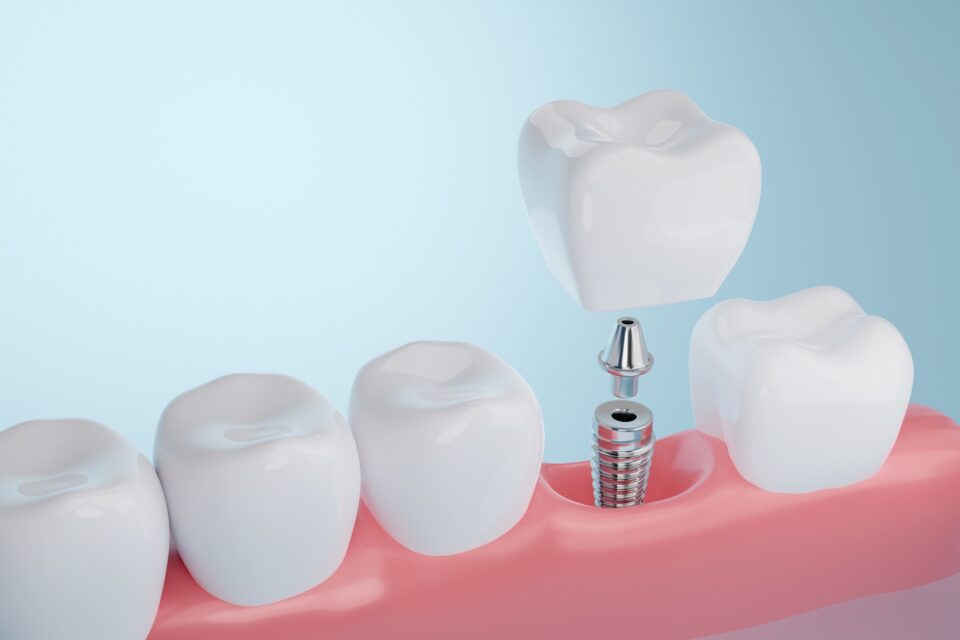Preserving Dental Health and Restoring Smiles With a Root Canal in Pompano Beach FL
Experience pain relief and save your natural tooth with expert root canal treatment. Gentle and effective root canal therapy to restore your oral health.

root canals in pompano beach
At Dr. Jaline Boccuzzi, DMD, you can rest assured that your root canal is in great hands. With years of experience and a commitment to exceptional service, Dr. Boccuzzi has established herself as one of the area’s most trusted root canal experts. She is committed to using only the latest technology when treating her patients, ensuring you receive the highest-quality care possible.
We understand that a root canal procedure can be stressful and overwhelming. That is why our team always strives to make the process as easy and comfortable as possible for our patients. We provide detailed explanations of the procedure before it begins so that you are fully informed about what to expect. Dr. Jaline Boccuzzi, DMD also offers sedation dentistry services, so you can rest easy and feel at ease throughout your procedure.
Contact us today to learn more about our root canal services and other dental treatments.
what is a root canal?
Root canals are a dental procedure used to help treat and save teeth injured due to deep cavities, cracks, chips, or other trauma. The infected pulp inside the tooth is removed and replaced with a composite filling material during the root canal procedure. The affected area will then be sealed off to prevent further infection. This procedure often relieves a patient’s pain and discomfort associated with the damaged tooth.
This procedure is typically recommended when a patient has an infection in their pulp caused by bacteria entering the tooth’s root canal system due to deep cavities or trauma. When this occurs, it can cause inflammation and swelling, leading to severe pain and discomfort. Root canals are sometimes the only way to save a tooth damaged beyond repair due to infection or trauma.
Root canal procedures can be done in one or two appointments, depending on the complexity of the treatment. During the procedure, the dentist will use local anesthesia to numb the area around the infected tooth and then use special drills and files to remove the infected pulp material. They will then fill the area with a composite filling material and seal off the treated area to prevent further infection.
It is typically successful at treating and saving an injured or infected tooth. Still, there are some risks associated with this procedure, including pain or discomfort during the treatment, swelling or infection of the treated area after the procedure, and the possibility that further treatment may be necessary if the tooth does not heal properly. Discussing all possible risks with your dentist before undergoing a root canal procedure is important.
non-surgical root canal
A root canal is a dental procedure to treat an infected or damaged tooth pulp. Traditionally, a root canal involves removing the infected pulp and nerve tissue from the tooth’s root canal system, cleaning and shaping the channel, and then filling and sealing it to prevent further infection.
While a non-surgical root canal may sound contradictory, it refers to a root canal procedure that does not involve the removal of the infected pulp through surgical means. Instead, it distinguishes a root canal from alternative treatments like tooth extraction.
During a non-surgical root canal, the dentist or endodontist (a dentist specializing in root canal treatments) will access the tooth by creating a small opening in the tooth’s crown. This can usually be done under local anesthesia to ensure a pain-free experience. The infected or inflamed pulp is then removed using specialized dental instruments, and the canals are cleaned, disinfected, shaped, and filled with a biocompatible material called gutta-percha.
Non-surgical root canals are the standard approach for most cases and are highly effective in saving the natural tooth. However, in some complex cases or if the initial treatment fails, the dentist may recommend a surgical approach, known as an apicoectomy or root-end resection.
It’s important to note that while a non-surgical root canal is generally successful, it is crucial to follow your dentist’s instructions for post-treatment care, including proper oral hygiene and regular dental check-ups, to ensure the long-term success of the procedure.
surgical root canal
When a traditional root canal falls short or isn’t enough to save your tooth, there’s a solution: surgical endodontic treatment. This minor surgery, also known as endodontic surgery or root canal re-treatment, becomes necessary to truly restore your tooth.
During a surgical root canal, we can identify hidden canals or tiny fractures that may have gone unnoticed in previous X-rays. We’re able to treat other complications as well, such as damage to the bone surrounding the tooth or calcium build-up in the root canals.
If inflammation or infection continues to pose a threat to your tooth’s structure, an apicoectomy, or root-end resection, may be the answer. This precision procedure is performed when bacteria persist after a conventional root canal.
Unlike non-surgical root canals, where access is gained through the tooth, our endodontists take a different route. Through a small incision in the gum, we carefully reach the root of the tooth. This ensures the preservation of any previous restoration and prevents the weakening of the tooth.
Once we’ve accessed the root, we remove any inflamed or infected tissue as well as the tip of the root. To seal the root canal, we use a tiny filling, also known as a root-end filling. In cases where there is significant space left by infection, we may perform bone grafting to facilitate regrowth and restore the area.
Trust our skilled endodontic team to provide top-notch surgical root canal treatment, addressing your unique needs and ensuring a healthy and confident smile.
reasons for a root canal
A dentist or endodontist (a specialist in treating dental pulp and root canal issues) may recommend a root canal procedure for several reasons. The primary goal of a root canal is to save a tooth that is infected or severely damaged by removing the infected pulp and nerve tissue from the tooth’s root canal system.
Some common reasons for a root canal include:
- Dental Pulp Infection: When tooth decay or a dental injury reaches the innermost layer of the tooth, called the dental pulp, it can cause an infection. The dental pulp contains nerves, blood vessels, and connective tissue. An infected pulp can lead to severe tooth pain, sensitivity, swelling, and the formation of an abscess. A root canal is necessary to remove the infected pulp and alleviate the infection.
- Deep Decay: A root canal may be required if tooth decay progresses to an advanced stage and reaches the pulp. Deep decay occurs when cavities are left untreated, allowing bacteria to penetrate the tooth’s protective layers and reach the nerve-rich pulp.
- Tooth Fracture: A severe tooth fracture can expose the dental pulp to bacteria, leading to infection. Fractures can occur due to trauma, grinding or clenching of teeth, or weakening of the tooth structure from large fillings or previous dental procedures.
- Repeated Dental Procedures: Teeth that have undergone multiple dental procedures, such as fillings or crowns, may develop complications over time. If these complications involve the pulp, a root canal may be necessary to treat the underlying infection or inflammation.
- Traumatic Injury: Teeth that have experienced a traumatic injury, such as a blow to the mouth or a sports-related accident, can have damaged or dying pulp. A root canal may be performed to address the resulting infection or inflammation.
- Cracked Tooth: A cracked tooth can expose the dental pulp to bacteria, leading to infection and pain. Depending on the location and severity of the crack, a root canal may be necessary to save the tooth.
It’s important to note that the specific reasons for recommending a root canal can vary based on individual circumstances. If you are experiencing tooth pain or sensitivity or suspect any dental issues, visiting a dentist for a thorough examination and proper diagnosis is crucial.
what to expect after a root canal
After a root canal procedure, it’s normal to experience some post-treatment effects. Here’s what you can generally expect during the recovery period:
- Discomfort: It’s common to experience some discomfort or mild pain in the treated tooth and surrounding area for a few days after the procedure. Your dentist may prescribe pain medications or recommend over-the-counter pain relievers to help manage any discomfort. Follow your dentist’s instructions for medication usage.
- Sensitivity: You may notice increased sensitivity to hot or cold temperatures, especially in the first few days following the root canal. This sensitivity is usually temporary and should subside as the tooth heals. Avoid consuming extremely hot or cold foods and beverages during this time.
- Swelling: Some mild swelling and tenderness in the gum tissue around the treated tooth may occur. Applying an ice pack to the external cheek area for short periods (10-15 minutes at a time) can help reduce swelling. If the swelling persists or worsens, contact your dentist.
- Temporary Filling: A temporary filling material is placed in the tooth after the root canal procedure. This temporary filling will protect the treated tooth until a permanent restoration, such as a dental crown, is placed. Take care not to excessively chew or bite on the treated tooth, especially while the temporary filling is in place.
- Oral Hygiene: It’s crucial to maintain good oral hygiene during the recovery period. Brush your teeth gently, avoiding the treated tooth area, and floss carefully. Follow any specific instructions provided by your dentist regarding oral care after the root canal.
- Follow-up Visits: Your dentist will schedule follow-up visits to monitor the healing process and determine when to place a permanent restoration on the treated tooth, such as a dental crown. Attend these appointments as scheduled to ensure proper recovery.
It’s important to remember that every individual’s recovery experience can vary. If you have any concerns, such as severe or prolonged pain, significant swelling, or any unexpected symptoms, contact your dentist for further guidance and evaluation.
Overall, a root canal is aimed at relieving pain, eliminating infection, and saving your natural tooth. With proper care and follow-up, most patients can expect to recover well and resume normal oral function.
pricing
The cost of a root canal procedure can vary greatly depending on the complexity of the tooth involved and the region in which you are located. The cost may also include additional treatments such as a crown or bridge, if needed. Additionally, some insurance plans may cover part or all of the cost of a root canal procedure, so it is always best to check with your insurance provider before beginning treatment.
Root canals are an important part of oral health and should not be ignored. If you suspect that you may need a root canal, it is important to consult with your dentist as soon as possible. Early detection and immediate treatment can help prevent further damage to the tooth and reduce the cost of a root canal in the long run.
At Dr. Jaline Boccuzzi, DMD, we can help provide information on what treatment is best for you and discuss any financial options that may be available.


